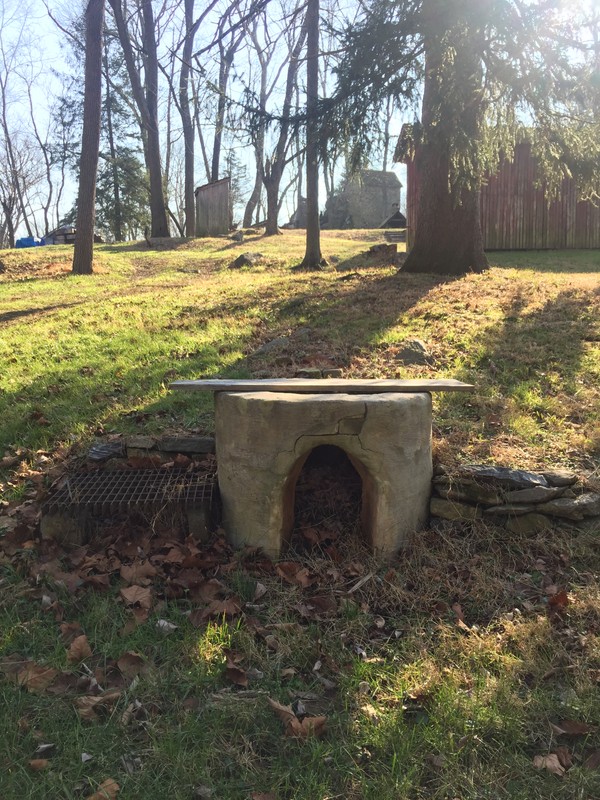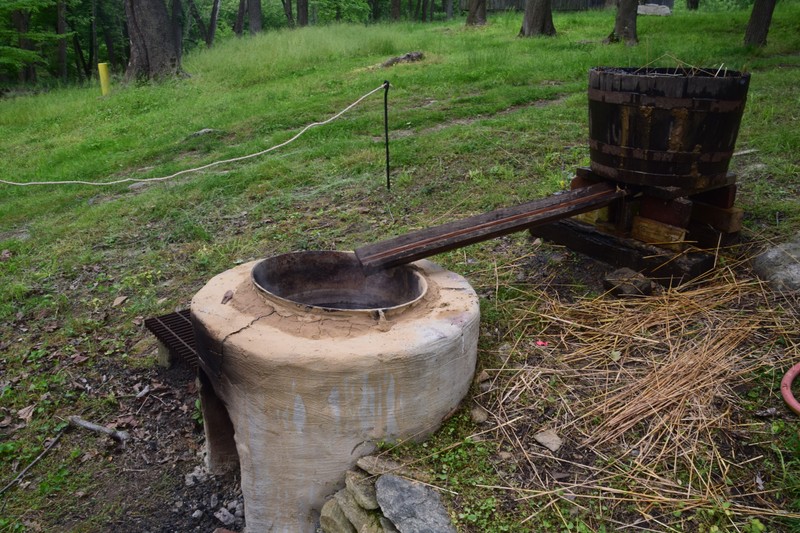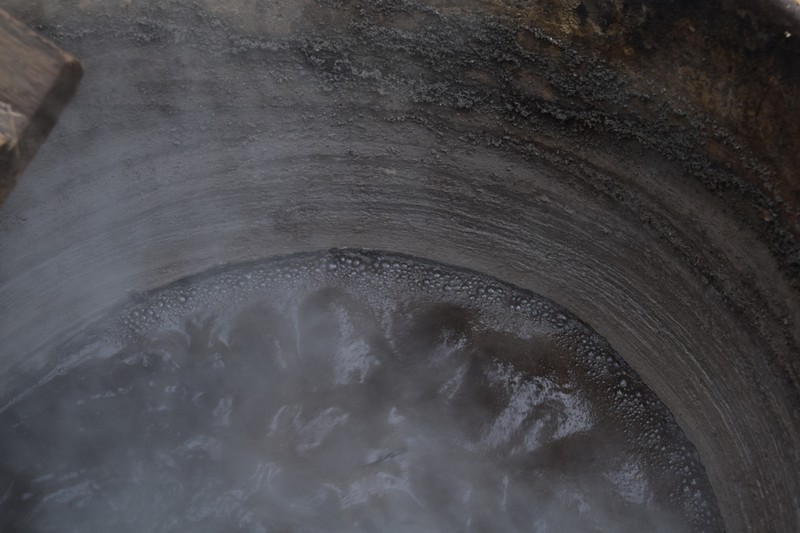Potash Kiln
Introduction
Text-to-speech Audio
Images
The potash kiln at NGM.

Lye is leached out of wood ashes with water and empties into the iron kettle.

The grey crust that forms on the sides of the kettle as the lye water is boiled is potash.

Backstory and Context
Text-to-speech Audio
Potash is a chemical substance that was used in making fertilizer, glass, soap, gunpowder and dyeing fabrics. In the 18th century, the primary source of potash was the ash from native hardwood trees. The basic chemical compound potassium carbonate was extracted by leaching the ashes in big iron pots to dissolve out the soluble components. Evaporation of the solution through percolation resulted in the production of potash.
An article published in the Pennsylvania Gazette in 1750 noted that potash was "a Commodity that no Nation hardly can be well without." So important was potash in early America, the very first US patent was issued in 1790 to Philadelphian Samuel Hopkins for improving the process and equipment for making it.
Sources
Patent No. 1, Explore PA History. Accessed December 17th 2020. https://explorepahistory.com/displayimage.php?imgId=1-2-988.
Mitchell, John. "An Account of the Preparation and Uses of the various Kinds of Potash." Pennsylvania Gazette (Philadelphia) December 18th 1750. , 1-1.
Newlin Grist Mill
Newlin Grist Mill
Newlin Grist Mill
